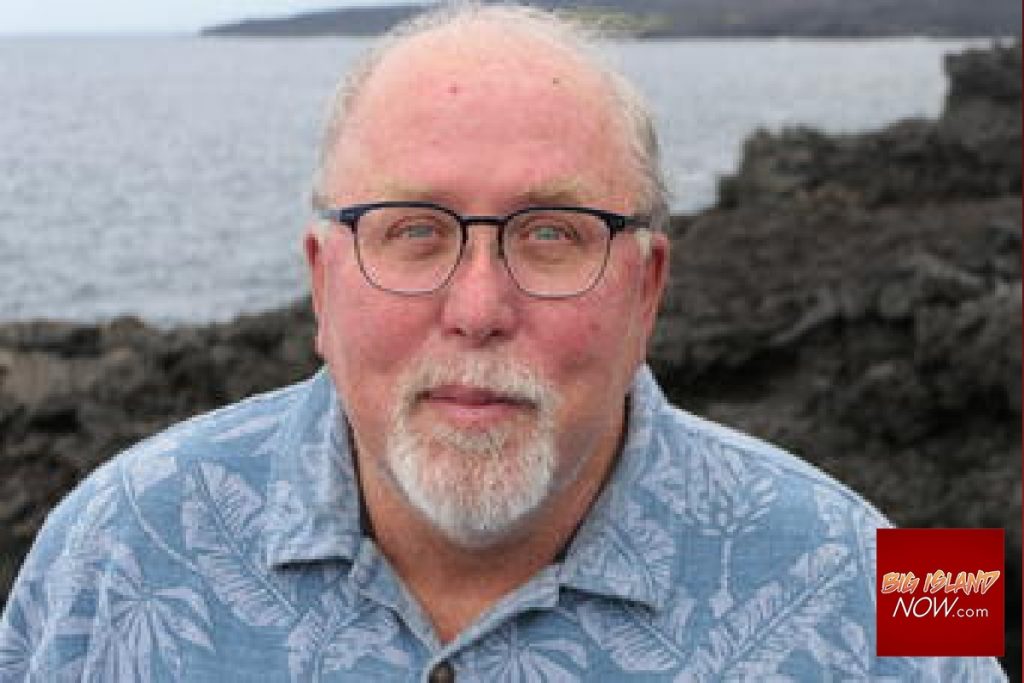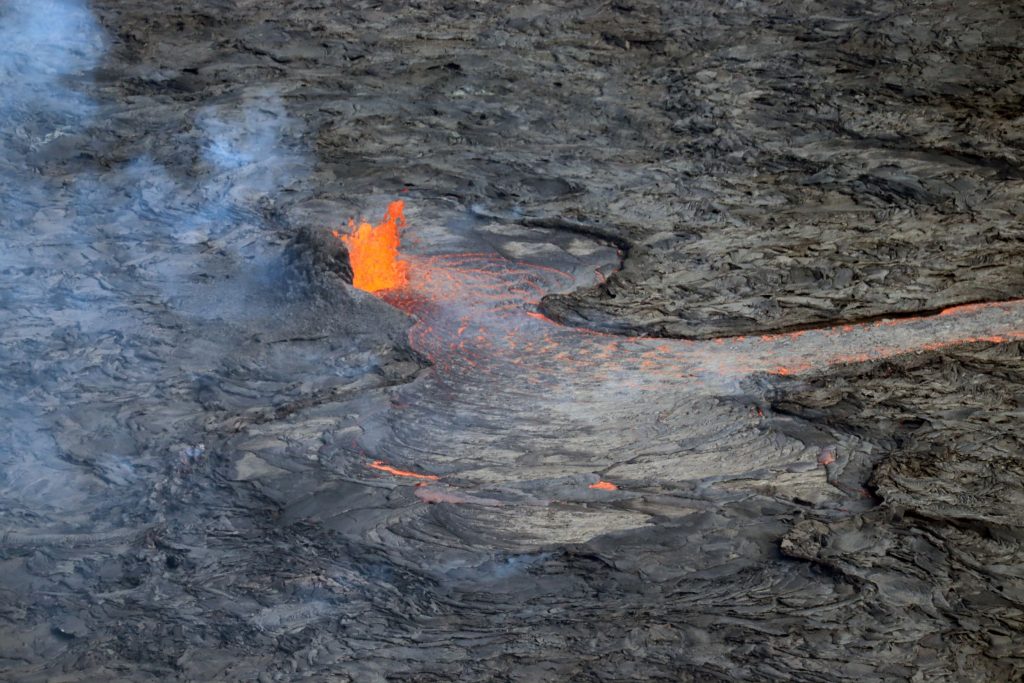Kīlauea eruption paused: ‘Mahalo Pele, and a hui hou (until we meet again)’
Indescribably beautiful and dramatic. That’s how Hawai‘i Volcanoes National Park described the most recent lava lake eruption of Kīlauea volcano that was gifted to the Big Island by Pele, the Hawaiian goddess of fire and volcanoes.

“No homes or infrastructure were threatened, and excellent views of her massive glowing, churning, flowing, fountaining lava lake were available from numerous overlooks along Kīlauea caldera rim for three months,” the park said in a March 22 Facebook post.
It’s been a little more than three weeks since the lava supply to the lake within Halema‘uma‘u crater ceased March 7 and the summit eruption paused. In case you missed it, the Hawaiian Volcano Observatory on March 21 lowered Kīlauea’s volcano alert level for ground-based hazards from watch to advisory and the aviation color code from orange to yellow.

Lava is no longer flowing on the crater floor and only minor deflation was being recorded at the summit as of Wednesday morning. Recent photos show a crusted-over lava lake in Halema‘uma‘u. Sulfur dioxide emissions also have decreased.
Seismicity is at background levels. The largest earthquake recorded in the area since the eruption paused was a 3.1-magnitude temblor about 3 miles southwest of Volcano Village at a depth of slightly more than half a mile.
No significant changes have been seen along Kīlauea’s rift zones either.
Hawaiian Volcano Observatory Scientist-in-Charge Ken Hon said Wednesday afternoon that magnitude-3 quakes like a few during the past month are not uncommon and likely were related to stress relief inside the volcano’s underground structures. To know whether the individual earthquakes had an impact on the eruption, however, is difficult because of Kīlauea’s many poorly defined faults and magma chambers, all of which changed in 2018 during the lower East Rift Zone eruption.
The eruption, which started Jan. 5 and followed a dual eruption of Kīlauea and Mauna Loa from Nov. 27 to Dec. 10 last year, pumped 4.4 billion gallons of lava into the crater over an area of nearly 300 acres, raising the crater floor 43 feet.
“What a run it has been,” the national park’s post said about the past several months of volcanic activity. “Mahalo, Pele, and a hui hou (until we meet again).”
At least for now. The Hawaiian Volcano Observatory said Wednesday that eruptive activity at the volcano that is ranked among the world’s most active — maybe even at the top of the list — could resume in the near future with little to no warning.
“Seismicity and deformation patterns remain unsettled,” the observatory said in its March 21 volcanic activity notice. “Potential remains for resumption of this eruption or initiation of a new eruption at or near the summit of Kīlauea.”
Statistically, very few eruptions around the world resume after being paused for three months, according to Hon. So the 2023 eruption, if it does not come back to life, likely won’t be declared over until at least early June. Each of the last three summit eruptions of Kīlauea also have been unique since all used new vent systems.
The volcano’s behavior has clearly changed, Hon said. Kīlauea has been through two years of summit eruptions now. The last time activity like what’s been seen lately was in 1967-68. Going back to the 1800s, almost all of the activity was at the summit with just a few rift zone eruptions.
Since the 1950s, Kīlauea has alternated between summit eruptions and rift zone events, including the eruption of Pu‘u‘ō‘ō that lasted 35 years, from 1983 to 2018. It was the longest and most voluminous outpouring of lava from the East Rift Zone in more than 500 years.
Only time will tell if the volcano’s behavior has changed for good.
Hon said while Kīlauea remains active, this break is different than what happened when the last summit eruption paused in December. Seismicity and inflation continued to be elevated after that eruption stopped, with tilt slowly climbing and indicating a repressurizing of the volcano.
“Things are quieter at the summit than they have been,” he said, adding there’s been little shift in tilt during the past week or two, earthquake activity has decreased significantly and gas emissions are down. However, activity is not as quiet as after the May 2021 summit eruption.
Mauna Loa, on the other hand, has been quiet for more than three months. The first eruption of the volcano in 38 years began Nov. 27 and ended Dec. 13 of 2022. Inflation continues as magma replenishes the magma chamber at the 13,681-foot summit.
Mauna Loa’s volcano alert level was changed to normal and its aviation color code to green on March 16.
Hon said a 3.9-magnitude earthquake on Mauna Loa’s south flank just after 5 p.m. March 23 about 15 miles west-northwest of Volcano Village at a depth of 2.3 miles was caused by internal tectonic stress adjustment. Otherwise, the volcano observatory is seeing almost no quake activity at the volcano.

Before it ended, the 2022 eruption in Mauna Loa’s Northeast Rift Zone — described by the national park as breathtaking, spectacular and epic in a March 25 Facebook post — spewed 40 billion gallons of lava that covered 8,900 acres. That’s close to average for historical eruptions on the volcano’s northeast flank, according to the Hawaiian Volcano Observatory.
There are still hazards at the Kīlauea summit despite the eruption’s pause. For more information about those hazards, click here. You can also check out a livestream of the inactive western lava lake area on YouTube.
The Hawaiian Volcano Observatory continues to closely monitor both volcanoes.
“Who wants to guess when Pele will make her next appearance?” the national park asked to end its March 22 Facebook post.
Kīlauea updates are issued daily. Mauna Loa updates are now issued monthly, with the next one scheduled for April 6.






























